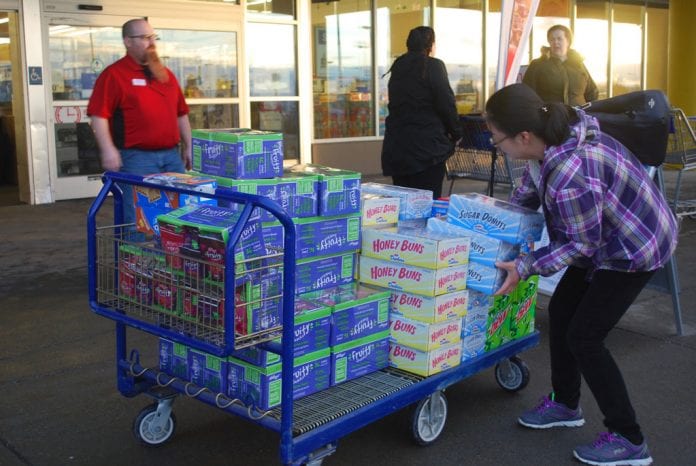
Job losses will continue in some areas of the Alaska economy in 2018, but the good news is more than a million visitors are anticipated via cruise ships, the coffee industry continues to perk and there’s budding growth in the marijuana industry, says state labor economist Neal Fried.
The grin on Fried’s face as he offered the perky update on coffee and marijuana businesses, now legal in Alaska was reflected in the laughter of guests at the Building Owners and Managers Association luncheon at the Anchorage Hilton on Jan. 12.
And, said Fried, with a nod toward his Powerpoint presentation up on three screens in the hotel’s ballroom, “another budding growth industry” is marijuana. In November 2016, the state of Alaska collected $81,100 in taxes on the now legal industry. Tax collections on marijuana peaked at $953,591 in October of 2017 and dropped to $872,197 in November, revenues that are not going to get high enough to bail out the economy, he said.
Fried’s presentation came in the wake of announcement in the two past weeks that anchor tenant Sears was closing its department store in the midtown mall known as the Sears Mall, and all three Sam’s Club stores in Anchorage were closing too. While the upcoming closing of Sears was somewhat anticipated, the announcement from Walmart that three of the 63 Sam’s Clubs stores closing nationwide were in Alaska came as a surprise.
Both Fried and Bill Popp, president and executive director of the Anchorage Economic Development Corp., said they didn’t see those closures coming.
“The decision they made was economics,” said Popp, of Walmart’s decision. “The stores were not performing at the level they were wanting them to and the recession did not help. We did have a good holiday season, but overall consumers have pulled back to a degree. They have been concerned about what the future holds.”
Popp estimated upwards of 150 employees at each Sam’s Club store would be job hunting, and that the closures would also have an impact on employment of others employed in support industries, including refrigeration specialists and electricians.
Still, said Fried, Alaska is seeing a softening of the recession and the economy seems to be improving a bit. “I’m predicting that the number of jobs in Anchorage will fall again in 2018 by 1.8 percent, in numbers that’s about 2,800. We feel that we’re going to probably lose fewer jobs in some of those basic sectors like oil and gas, but the loss of those jobs from last year are going to spread more into our secondary sectors.”
The good news, he said, is that the economy of Alaska’s largest city is better diversified to deal with the low oil prices, and the current recession really has very little to do with real estate. It’s nothing like the 1980s,” he said, referring to a period when oil prices tumbled, several banks closed and Anchorage lost 12,000 jobs and 29,000 residents.
Median household income in Anchorage in 2016 was $80,862, compared to the national median household income of $57,617, according to the U.S. Census Bureau.
The military sector of the economy remains stable, there is a lot of positive noise in the oil industry and the nation as a whole is doing well, Fried said.
He also noted that the state’s senior population grew by five percent in 2017. “That’s a lot,” he said, also noting that the health care industry just keeps on growing. Some of the 800 jobs the health care industry added in 2017 in Anchorage were due to Medicaid expansion, Fried noted in an article in the January edition of Alaska Economic Trends. The entire edition is online.














